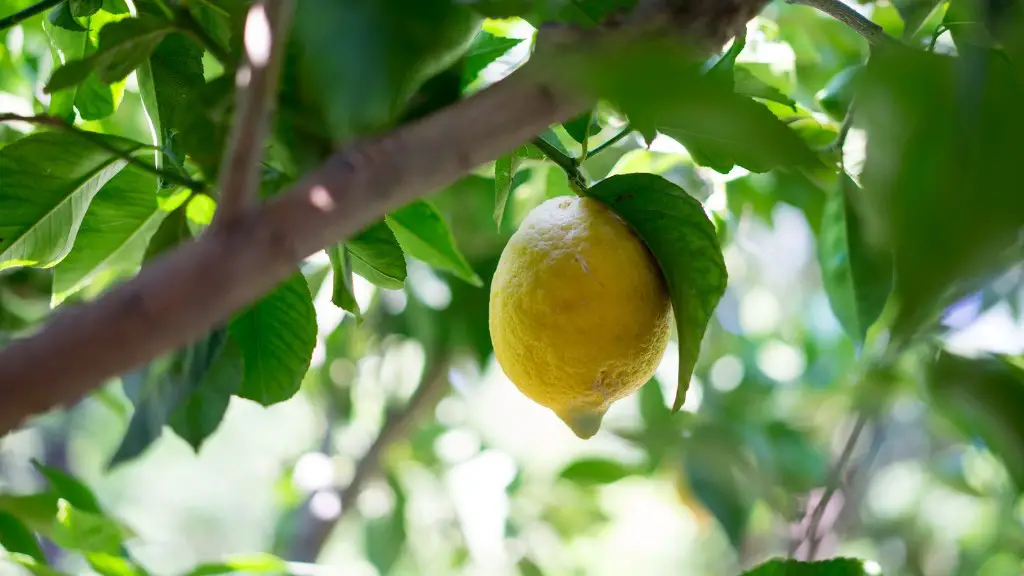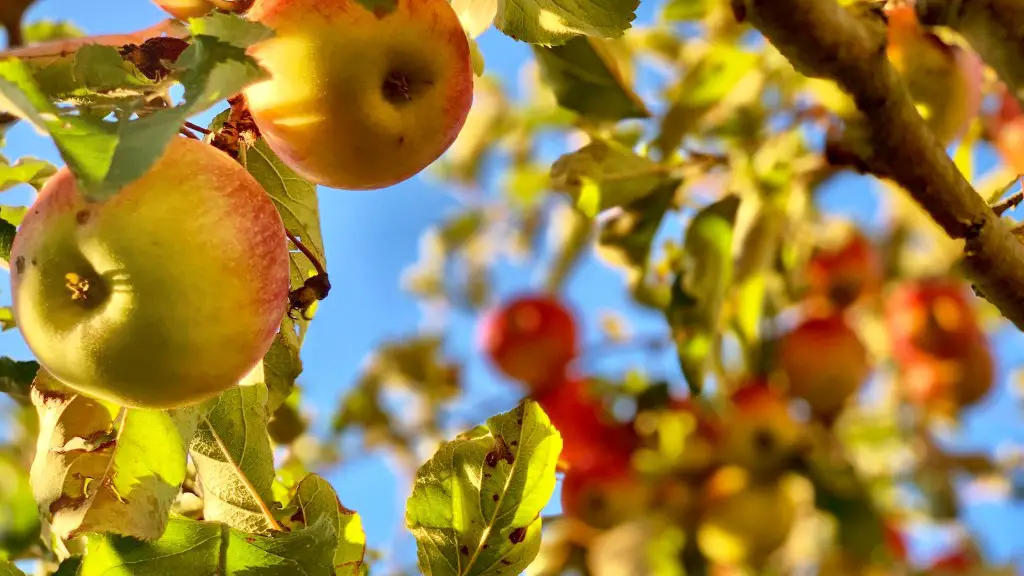Growing an avocado tree at home can be a rewarding and fulfilling experience that results in a plentiful harvest of avocados. But how long does it take for an avocado tree to produce fruit? Depending on the variety, soil conditions and climate, it can take anywhere from 3–11 years before an avocado tree starts to bear fruit. That could be a long time to wait, but with expert advice and the right conditions, it doesn’t have to be.
Avocado trees, which are technically a species of berry, respond well to warm temperatures and ample sunlight. Planting an avocado tree in the right kind of soil and manipulating pruning techniques to reduce excess vegetation can help encourage healthy growth and production of fruit. By understanding the basics of growing an avocado tree, you can have a crop of avocados to harvest faster.
Different varieties of avocado trees have different maturation times; some will bear fruit within three years of being planted, while others take as long as 11 years. Determining which variety is best for your climate is essential. Late-bearing varieties will take the longest to produce fruit and thrive in drier, milder climates in USDA Zones 9–12. Early bearing varieties will produce fruit more quickly, but they require moist soil and hot temperatures found in warmer climates like those in USDA Zones 10–15. Knowing which variety of avocado to choose, and how to best care for it, will make all the difference in producing a successful crop.
Climate and soil conditions have a major influence on how long it takes for an avocado tree to bear fruit. Climate does not just determine what type of avocado tree should be planted; it also helps dictate when to plant them. It is generally recommended that growers wait until the evening temperatures are consistently between 55 and 85 degrees Fahrenheit before planting an avocado tree. That way, it has the best environment in which to establish and fruit quickly.
But soil plays an important role, too. Ground with loam, silt or clay that has medium sand content and high organicmatter is ideal for avocado trees. Soil testing can help determine the acidity and mineral content of the soil and should be done prior to planting an avocado tree. With in-depth soil analysis and the correct information, growers can ensure optimal growing conditions and increase their chances of producing a good crop.
Acquiring the right tools is essential for any grower—especially for one looking to grow an avocado tree. Gardeners should know the pH levels of their soil, which can be adjusted with the appropriate fertilizer. Pruning tools like shears and saws should be available, as well as a watering can to properly administer water to the young tree.
By taking into account these variables, growers can reduce the time it takes for an avocado tree to produce fruit from 3–11 years down to as little as one. Otherwise, an avocado tree may take up to 11 years to bear fruit. However, with the proper care and the right conditions, growers can enjoy the fruits of their labor in no time.
Protecting the Tree
It takes more than just the right soil and climate conditions to produce fruit—an avocado tree needs to be managed and protected in order to ensure a successful crop.Harvesting can be a tricky part of the process, because if it’s done too early it could be damaging to the tree. Additionally, it’s important to protect the tree from animals and insects who may damage or eat the fruits or the tree itself. Other measures, such as providing adequate water during dry spells and not overcrowding the tree when fertilizing, will help the tree reach its fullest potential.
Avocado trees are vulnerable to sunburnt foliage, so it’s important to plant them in the right area. As the tree matures, it can be placed in full sun, but if the tree is younger, gardeners should drape it with a shade cloth to avoid burning. Additionally, pests need to be spotted and eliminated quickly, as they can reduce the harvest and lead to disease.
The avocado tree’s root system can also be fragile, so it’s important to be mindful when weeding and using other tools for maintenance. Using non-invasive techniques, such as hand pulling, can minimize the chance of damaging the root system.
Finally, to reduce the tree’s stress levels, sufficient space must be provided for it to grow. Proper pruning is essential to ensure that the tree has the room it needs to reach its maximum potential.
Managing the Crop
Rather than letting the avocados all ripen at once, they should be harvested gradually, so they can be enjoyed weekly or biweekly throughout the avocado season.Avocados do not ripen on the tree, but rather can take up to two weeks to become ripe. For this reason, it’s recommended to wait until they are fully ripe before they are picked off the tree.
However, unlike some other fruits, avocados do not fall off the tree when they are ripe. When picking an avocado, gardeners will need to harvest the fruit with a gentle tug, using gloves for protection. It’s essential to recognize when avocados are ripe and should be taken off the tree, as avocados that are left on the tree for too long will not ripen properly.
Utilizing a scale can help identify when the avocado is ready to be picked. It’s also important to time the harvesting correctly in order to keep the harvest window as wide as possible.Some commercial cultivators use a “shock” technique to harvest their avocados—they will place a weight on one branch of the tree and move it up and down on a regular basis. This causes the avocados to ripen and ensures that the harvest window is wide open.
Once the avocados are harvested, they should be stored to ensure they continue to ripen. The key to successful ripening is to collect the avocados then place them in a closed container and store them at room temperature. Gardeners should also monitor the avocados regularly, inspecting for any discoloration or softness. As soon as one avocado is ripe, it’s important to place it in the refrigerator; otherwise, it will spoil quickly.
Watering and Fertilizing
Watering is easily the most important aspect of caring for an avocado tree. Avocados are drought-resistant, but they still need to be watered regularly, especially in hot climates. Providing enough water to the tree during its first few years of growth is key to ensuring a successful harvest. The tree needs to be watered around two to three times a week when rainfall is scarce. As the tree matures, the watering needs sometimes require less water.
Fertilizing is important, but should be done with caution. Too much fertilizer can be as damaging as too little. When starting off, gardeners should apply a low-nitrogen fertilizer to the soil around the tree. As the tree matures, fertilizer should be applied only once or twice a year.
Pruning for Optimal Health
Pruning an avocado tree is essential for maintaining a healthy crop and ensuring a successful harvest. The aim of pruning is to help an avocado tree grow to its full potential and develop an attractive shape. Pruning should be done with sharp shears and hedge trimmers, and should focus on dead or weakened branches. Additionally, branches should be pruned to create an open and airy shape to ensure plenty of sunlight reaches the leaves, and help airflow aid the growth of the tree.
It’s important to prune the tree’s main branches and secondary ones, as well as the top. Pruning should also be done to remove diseased or dead wood, and trim off any crowded branches that are preventing sunlight from reaching the center of the tree. These areas should be made accessible, to allow the tree to receive proper light, air, and nutrients.
Without proper pruning and maintenance, an avocado tree can become weak, spread out and produce fewer fruits. Taking the time to prune the tree a few times a year will help it reach its maximum potential and produce plenty of avocados.
Conclusion
Growing an avocado tree at home can be a rewarding and fulfilling experience. But the amount of time it takes for an avocado tree to produce fruit depends on the variety, soil conditions, climate, and proper maintenance. With the right conditions, an avocado tree can produce fruit in as little as three years; otherwise, it can take up to 11 years. Knowing how to protect the tree, manage the crop and harvest the avocado, gardening adequately and pruning properly are all key aspects of successfully growing an avocado tree to bear fruit sooner.



